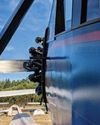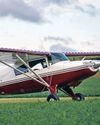
Recent data from the National Transportation Safety Board says, over the past decade, the trend in general aviation accidents has been headed in a positive direction—down. In 2012, the board recorded 1,471 GAaccidents, 273 of which were fatal. Those accidents claimed the lives of 440 people. The latest NTSB data available from 2017 lists 1,233 accidents, with 203 fatal accidents that cost 331 lives. So, what can the industry do to continue driving down that trend?
Back in the mid-1990s, the commercial aviation industry was also wrestling with uncomfortable accident numbers that cost the lives of hundreds aboard Part 121 carriers. The industry decided it had reached a breaking point, creating the Commercial Aviation Safety Team in 1997 around an ambitious plan to take a bite out of the risks of flying. Specifically, CAST—made up of people from a variety of government and industry organizations—set a goal of reducing the risk in commercial aviation by 80 percent by 2007.
Skybrary reports: “To achieve this ambitious goal, CAST developed and started implementing a comprehensive Safety Enhancement Plan. By 2007, CAST was able to report that, by implementing the most promising safety enhancements, the fatality rate of commercial air travel in the United States was reduced by 83 percent.” CAST continues developing, evaluating and adding safety enhancements to its plan for the continued reduction of fatality risk by using, according to the FAA, data-driven approaches to identify and address potential risk factors. The agency says, “This methodology includes voluntary commitments, consensus decision-making, data-driven risk management, and a focus on implementing the agreed-upon safety enhancements.”
This story is from the September 2020 edition of Flying.
Start your 7-day Magzter GOLD free trial to access thousands of curated premium stories, and 8,500+ magazines and newspapers.
Already a subscriber ? Sign In
This story is from the September 2020 edition of Flying.
Start your 7-day Magzter GOLD free trial to access thousands of curated premium stories, and 8,500+ magazines and newspapers.
Already a subscriber? Sign In

The Temple of Speed
Reno entices even this altitude-oriented pilot.

Flat Sixes
Fanatical artisans

Blue over Green, Tent in Between
I’m old , I’m cranky. Why do I keep air-camping?

Gulfstream Reveals G400, G800
The product lineup gains large-cabin and ultralong-range mounts.

Every Airplane Requires a Checkout
Embrace the challenge of mastering a new machine.

Fuhggedaboutit
Fifty-plus years of f lying forgetfulness

THE MAULE FAMILY APPROACHABLE AIRCRAFT
Choose your mount —the Maules do it all.

Sisters
“ Women certainly have the courage and tenacity required for long flights.” —Mildred Doran

INSIDE OUT OR OUTSIDE IN?
What kind of pilot should you be?

WE FLY: CESSNA CITATION CJ4 GEN2
THE FLAGSHIP CJ JUST GOT A WHOLE LOT BETTER.